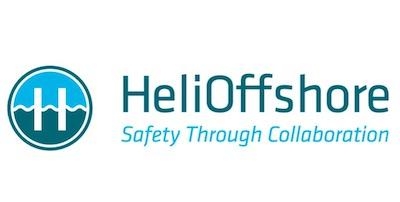Consults Flight Instructors And Examiners on How To Utilize Findings
Having completed two phases of research to track the eye movements of helicopter pilots, HeliOffshore is consulting with Type Rating Instructors (TRIs) and Type Rating Examiners (TREs) to advise on how the findings from this unprecedented program can be applied to enhance safety on the front line. The association is now seeking direct input from member operators and training organizations.

The eye-tracking research has been developed by HeliOffshore member operators working with industry experts Jarvis Bagshaw Ltd. It is primarily aimed at helping flight crew to make better, safer use of the high degree of automation in modern helicopters. Using flight simulators, researchers have been able to track where pilots are looking during the various stages of a flight – in their roles as Pilot Flying and Pilot Monitoring, during coupled and uncoupled flight, during normal and non-normal operations. These investigations have been supported by data gathered by anonymously surveying pilots to compare how crews believe they perform (in accordance with published operational procedures) with how they performed in the research scenarios. In particular, the research has yielded a better understanding of the pilot monitoring function, i.e. how they monitor cockpit instruments and displays.
In total, 39 pilots from HeliOffshore member operators Babcock Aviation Offshore, Bristow Group and CHC Helicopters have been involved in the research. Airbus Helicopters supported the work by donating time in their EC225 simulator in Phase 1 with Bristow providing access to their S92 simulator in Phase 2.
During the simulator sessions, researchers recorded pilot activity in situations where visibility was such that the crew need to rely on aircraft instruments, rather than outside visual cues. The flights replicated a realistic workload that immersed both crew members in individual and shared duties, specifically flying the helicopter, navigating with instrument approach patterns on- and offshore, and – in Phase 2 – while dealing with various system degrades and malfunctions.
The pilots wore special eye-tracking glasses. These were connected to a system that combined a camera with an infrared light source that illuminates the eye with bursts of non-harmful infrared light. Some light disappeared into the pupil and some of it bounces off the iris, cornea, eyelid or surrounding skin. These areas reflected different levels of infrared light, which was picked up by the camera and then analysed to reveal which areas of the cockpit displays are monitored during which phases of flight. This approach helped researchers to identify how crews observe flight instruments and other cockpit displays together and independently as they perform prescribed and unprescribed procedures.
“We will use the results to improve training and standard operating procedures, and give feedback to the manufacturers about the design of automation and cockpits,” explained Francois Lassale, HeliOffshore’s Operations Director. Findings from the research will also be reviewed as part of the ongoing EASA project to support the case for evidence-based training in the offshore helicopter sector; a project currently supported by a number of HeliOffshore members.
The next key step is to support a small number of regional workshops to deliver learnings from Phases 1 and 2 of this research to HeliOffshore operator member training subject matter experts world-wide. “Awareness of the potential vulnerabilities identified through the research is the first line of defence for front line crews” says Operational Effectiveness workstream co-chair, Tim Rolfe. “We can deliver awareness by engaging the instructor and examiner community and, at the same time, tap into their collaborative inputs to devise enhancements to existing pilot training programmes.” It is intended that the planned workshops are conducted in the latter half of 2018, with feedback from these workshops forming the basis of potential training enhancements to be tested for effectiveness in a Phase 3 of this research when funding can be made available in 2019.
(Source: HeliOffshore news release)
 ANN's Daily Aero-Linx (04.15.24)
ANN's Daily Aero-Linx (04.15.24) Classic Aero-TV: 'No Other Options' -- The Israeli Air Force's Danny Shapira
Classic Aero-TV: 'No Other Options' -- The Israeli Air Force's Danny Shapira Aero-News: Quote of the Day (04.15.24)
Aero-News: Quote of the Day (04.15.24) Airborne 04.16.24: RV Update, Affordable Flying Expo, Diamond Lil
Airborne 04.16.24: RV Update, Affordable Flying Expo, Diamond Lil ANN's Daily Aero-Term (04.16.24): Chart Supplement US
ANN's Daily Aero-Term (04.16.24): Chart Supplement US



